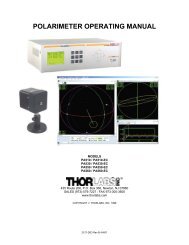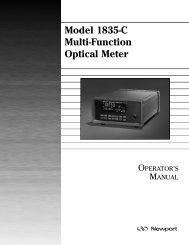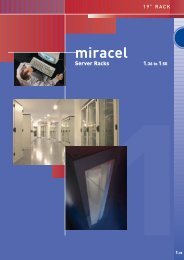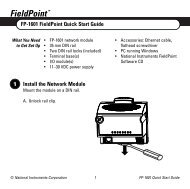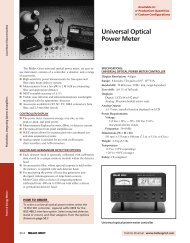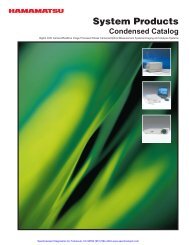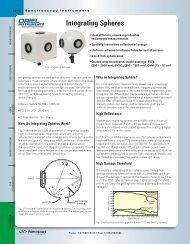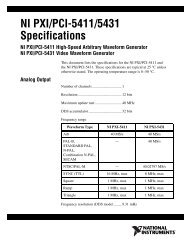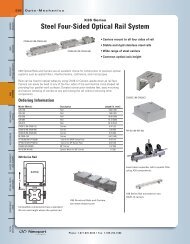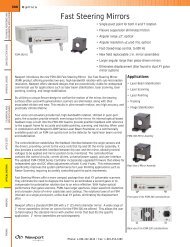(8.5x11) 6000 Manual Cover - Newport Corporation
(8.5x11) 6000 Manual Cover - Newport Corporation
(8.5x11) 6000 Manual Cover - Newport Corporation
You also want an ePaper? Increase the reach of your titles
YUMPU automatically turns print PDFs into web optimized ePapers that Google loves.
C.4 Status Byte<br />
The Status Byte register is used to record a summary of current system<br />
conditions for the status reporting system. It is returned to the controller<br />
when a serial poll of the 2832-C is conducted or when the *STB? query is<br />
issued. The register is bit mapped, meaning that each condition is represented<br />
by a bit. When a bit is set, or has a value of 1, then the condition is<br />
true. The bits are cleared based on the conditions described for each bit.<br />
The Service Request Enable register is used to define the conditions that will<br />
generate a IEEE 488.1 . When an event occurs that causes a bit to be set<br />
in the Status Byte register and it’s corresponding bit is set in the Service<br />
Request Enable register, then a will be generated.<br />
The Service Request Enable Register is configured by using the *SRE common<br />
command.<br />
The Parallel Poll Enable Register is used with the Status Byte to generate the<br />
message. If any bit is set in the Status Byte and it’s corresponding bit is<br />
set in the Parallel Poll Enable Register, then the message is set true (a<br />
value of one). Otherwise the message is set false (a value of zero).<br />
When a parallel poll is conducted with the 2832-C configured to respond to it,<br />
the message is compared to the (sense bit). If they are the same<br />
then the configured data line will be driven true in response to the parallel poll.<br />
Both the and the data line driven during a parallel poll can be selected<br />
by the IEEE 488.1 parallel poll remote configuration command.<br />
The Parallel Poll Enable Register is configured by using the *PRE command.<br />
The Status Byte Register is described below.<br />
Status Byte<br />
bit 7: Error Queue<br />
A one in this bit indicates that the error queue is not empty (see the<br />
*ERR? query). The *CLS command will empty the error queue and, as a<br />
result, this bit.<br />
bit 6: Service Request/Master Summary Status<br />
When the status byte is read by means of a serial poll, this bit is set<br />
when the 2832-C is requesting service.<br />
When the status byte is read by means of the *STB? query, this bit will<br />
be set if any bit in the status byte is set and its corresponding bit is set<br />
in the Service Request Enable Register.<br />
bit 5: Event Status Byte<br />
The Event Status Byte bit is set when a bit in the Standard Event Status<br />
register is set and its corresponding bit in the Standard Event Enable<br />
register is set. The *CLS command or *ESR? query will clear the<br />
Standard Event Status register and, as a result, this bit.<br />
95



